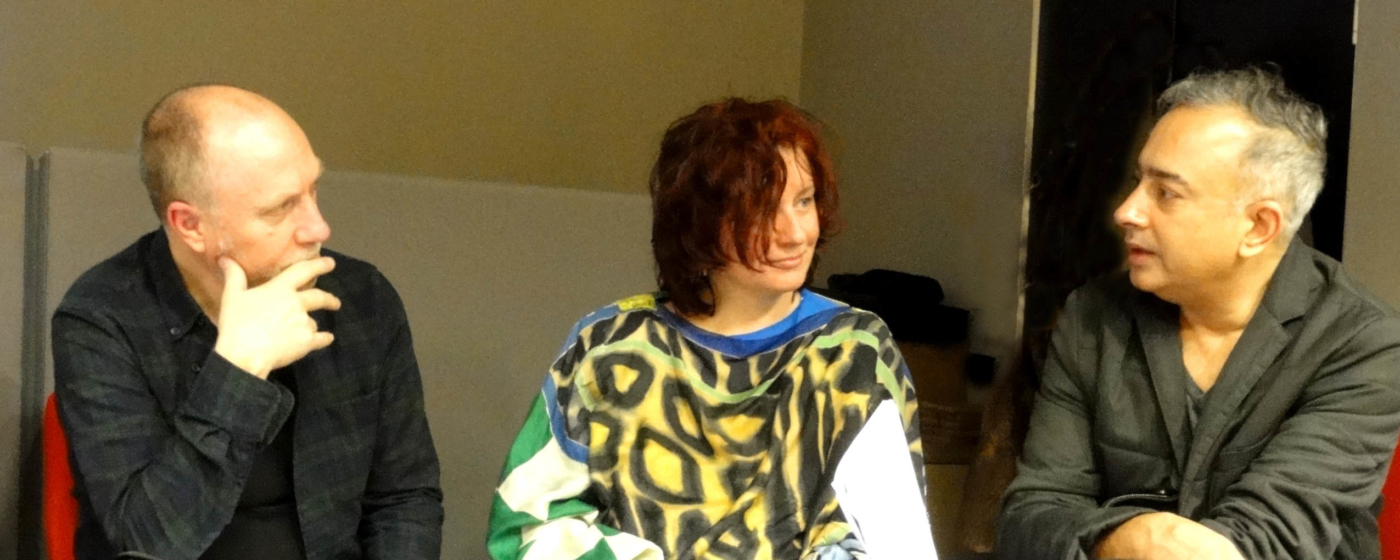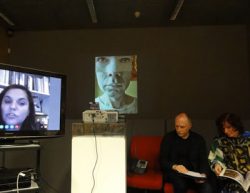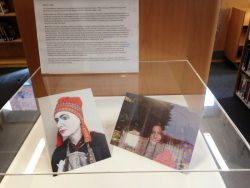- Venue
Stuart Hall Library
- Artists
The first Roma Pavilion was established in 2007 and the first Seychelles Pavilion in 2015. What are the implications of participation in and recognition by an international art exhibition for national and cultural identity? With Curator Timea Junghaus (via Skype) and artists Nitin Shroff, Léon Radegonde (via telephone), Daniel Baker and Delaine Le Bas.
La Biennale di Venezia has since 1895 played a central role in the international art world and implicitly in representing national identity. This dual cultural and political role makes the inclusion or exclusion of different nations of wider significance. This event will draw on the experience of those who have worked to have their nations represented for the first time and artists who exhibited.
Both the Republic of the Seychelles and the Roma community have a flourishing cultural heritage, are ethnically heterogeneous and geographically dispersed; in the case of the Seychelles across 115 islands and in the case of Romani people across several continents. They are both atypical of nations represented at the biennial and embody a diaspora or post-colonial condition. The Roma constitute a nation without a state and are the largest minority group in Europe. The Seychelles had no recorded indigenous population prior to settlement and was a French and then British colony before gaining independence in 1976.
“The Seychelles is a rich and complex culture whose stories are being told through their artist. In an attempt to go beyond the stereotyped perception of a tourist paradise, two distinctive voices are juxtaposed in this exhibition; thereby creating a dialogue that addresses contemporary issues of identity, economic policies and environmental impact. This talk will include some of the research and political aspects of the proposed Pavilion with which I aimed to begin an Indian Ocean narrative.”
- Nitin Shroff, proposed, initiated and a Commissionaire of Seychelles National Pavilion, 56th Venice Biennial.
“The title of the exhibition, Paradise Lost, refers to the fact that the majority society should at last give up not only negative stereotypes about the Roma, but also the exotic “Gypsy romances.” The self-image that is to emerge at this display through the reinterpretation of Roma identity is not expected to be homogenous or stable. It is our belief that the identity of the Roma serves as a model for a modern, European transnational identity that is capable of cultural fusion and adaptation to changing circumstances. This is how the artists invited represent themselves, and this is how they experience their Gypsy identity.”
- Timea Junghaus, Curator of the First Roma Pavilion, 52nd Venice Biennial.
Biographies
Tímea Junghaus is an art historian and contemporary art curator of Roma/Sinti origin. She was the curator of the First Roma Pavilion at the 52nd Venice Contemporary Art Biennale (2007). She has researched and published extensively on the conjunctions of modern and contemporary art with critical theory, with particular reference to issues of cultural difference, colonialism, and Roma representation. Junghaus is the founding director of Gallery8 – Roma Contemporary Art Space (www.gallery8.org) in Budapest, Hungary
Nitin Shroff is an Indian/Seychellois artist, and researcher and a Commissionaire of the Seychelles National Pavilion. He has exhibited internationally including at the 55th Venice Biennale and co-curated an exhibition of Indian Tribal and Contemporary art in France called “Indian Gaze.”
Delaine Le Bas is an English Romani Gypsy. Her works deal with issues of exclusion, identity, stereotypes, untold histories, misrepresentation, gender, feminism and being the ‘other’. Delaine was advisor and one of the sixteen artists who were part of The First Roma Pavilion. Recent projects include To Gypsyland co-curated by Barby Asante at 198 Contemporary.
Daniel Baker is an artist, curator and researcher. A Romani Gypsy, born in Kent, he holds a PhD on the subject of Roma aesthetics from the Royal College of Art, London. Baker acted as exhibitor and adviser to the first and second Roma Pavilions; Paradise Lost and Call the Witness at the 52nd and 54th Venice Biennales respectively. Baker’s art and writing examines the role of art in the enactment of social agency.
Léon Radegonde is an artist born on the island of La Digue. After studying in Canada, the UK and France he returned to the Seychelles as a practicing artist, director of the Kreol Institute and as chairman of the Association of Seychellois Artists. His works uses unconventional methods derived from found objects, material and images. Although the subject matter is deeply rooted in his identity and experience as a Seychellois, he looks to transcend national borders. He was one of two artists exhibiting at the 56th Venice Biennale, Seychelles Pavilion.




